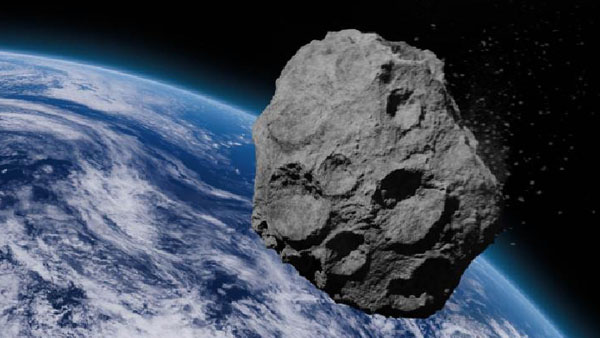By Satyabrat Borah
The discovery of a second moon orbiting Earth has captured the imagination of astronomers and space enthusiasts alike. This is not a plot for a science fiction movie but a real astronomical phenomenon confirmed by NASA. Designated as 2025 PN7, this small nearEarth object has been classified as a quasisatellite, meaning it shares a unique orbital dance with our planet around the Sun. Unlike Earth’s familiar Moon, which has been a constant companion for billions of years, this new cosmic traveler is temporary, expected to remain in its current relationship with Earth until approximately 2083. The arrival of 2025 PN7 offers a fascinating glimpse into the complexities of celestial mechanics, the nature of nearEarth objects, and the everevolving understanding of our place in the cosmos. This article explores the discovery, characteristics, and scientific significance of this temporary second moon, shedding light on why it matters to both science and the broader human perspective.
2025 PN7 is a small asteroid, estimated to be between 18 and 36 meters in diameter, roughly the size of a modest building. To put this into perspective, Earth’s Moon has a diameter of about 3474 kilometers, making 2025 PN7 a minuscule counterpart. Despite its small size, its presence is significant. First observed in August 2025 by the PanSTARRS survey at Hawaii’s Haleakalā Observatory, this asteroid was initially identified as a nearEarth object. Further analysis by NASA’s Jet Propulsion Laboratory and other astronomers revealed its unique orbital behavior, leading to its classification as a quasisatellite. Unlike a true satellite, which orbits Earth directly under its gravitational pull, a quasisatellite follows a path around the Sun that is synchronized with Earth’s orbit. This phenomenon, known as a 1:1 resonance, means that 2025 PN7 takes approximately the same time as Earth,about 365 days,to complete one orbit around the Sun. From certain vantage points, it appears to orbit Earth, creating the illusion of a second moon.
The concept of a quasisatellite might seem confusing at first. Imagine two runners on a circular track, running at the same speed but maintaining a distance from each other. They move in sync, never colliding but always in proximity. Similarly, 2025 PN7 follows Earth around the Sun, maintaining a stable but distant relationship. This behavior distinguishes it from Earth’s true Moon, which is gravitationally bound to our planet. Archival images suggest that 2025 PN7 may have been in this quasisatellite configuration since the 1960s, unnoticed until modern telescopes and computational models revealed its presence. Its orbit is expected to remain stable for about 126 years, after which, around 2083, the gravitational influence of the Sun and other celestial bodies will likely pull it away from Earth’s vicinity. This temporary nature underscores the dynamic and everchanging environment of our solar system, where objects come and go in a cosmic ballet.
The discovery of 2025 PN7 is not entirely unprecedented. Earth has had temporary minimoon companions before, such as 2024 PT5, which briefly orbited Earth for a few months in 2024. Other objects, like 2006 RH120 and 2016 HO3, have also been identified as temporary quasisatellites or minimoonlike objects. What makes 2025 PN7 stand out is its relatively long duration as a quasisatellite, potentially spanning over six decades. This longevity provides scientists with a unique opportunity to study its behavior over an extended period. The asteroid is believed to belong to the Arjuna group, a class of nearEarth asteroids with orbits closely resembling Earth’s. These objects are of particular interest because their proximity makes them accessible for study and potential exploration, while their orbits offer insights into the gravitational interactions that shape our solar system.
The scientific significance of 2025 PN7 is multifaceted. First, it enhances our understanding of orbital dynamics. By studying its path, scientists can refine models of how nearEarth objects interact with Earth’s gravity and the Sun’s influence. These models are crucial for predicting the trajectories of other asteroids, some of which could pose a threat if their orbits bring them too close to Earth. While 2025 PN7 itself is too small to cause any harm ,its study contributes to planetary defense strategies. Organizations like NASA’s Planetary Defense Coordination Office rely on such data to monitor and assess potential asteroid impacts. Understanding the behavior of quasisatellites like 2025 PN7 helps improve these predictive tools, ensuring humanity is better prepared for future cosmic visitors.
2025 PN7 offers a window into the history of our solar system. The origins of quasisatellites are still a subject of research. Some scientists hypothesize that 2025 PN7 could have originated from the main asteroid belt between Mars and Jupiter, dislodged by collisions or gravitational perturbations. Others suggest it might be a fragment of the Moon, ejected during an ancient impact event. A notable example is the quasisatellite Kamo’oalewa, which some researchers believe could be lunar debris. Determining the composition and origin of 2025 PN7 could reveal clues about the early solar system, including the processes that shaped the terrestrial planets and their moons. Future observations, possibly with advanced telescopes or even spacecraft missions, could provide spectroscopic data to analyze its surface composition, offering further insights into its history.
The potential for resource exploration is another exciting aspect of studying 2025 PN7. Asteroids, even small ones, are rich in materials like metals, silicates, and possibly water ice. In the future, mining such objects could provide resources for space exploration, reducing the need to launch materials from Earth. For instance, water extracted from asteroids could be used for drinking, fuel production, or radiation shielding in space habitats. While 2025 PN7 is too small to be a primary target for mining, its study contributes to the broader understanding of nearEarth asteroids as potential resource reservoirs. Companies and space agencies, including NASA, are already exploring asteroid mining as a viable future industry. The data gathered from 2025 PN7 could inform the design of missions to larger asteroids, paving the way for sustainable space exploration.
The public’s reaction to this discovery has been a mix of awe and curiosity. Social media platforms have buzzed with headlines about Earth’s “second moon,” sparking both excitement and misconceptions. Some have speculated that 2025 PN7 could cause earthquakes or tidal disruptions, but NASA has clarified that its small size and distant orbit render it harmless. Its gravitational influence on Earth is negligible, and it poses no threat to our planet’s environment or ecosystems. Instead, this discovery serves as a reminder of the wonders of the cosmos, encouraging people to look up and ponder the mysteries of the universe. For students and educators, 2025 PN7 offers a tangible opportunity to engage with astronomy. By modeling its orbit or discussing its implications, classrooms can bring complex scientific concepts to life, fostering a new generation of scientists and explorers.
From a philosophical perspective, the arrival of 2025 PN7 prompts reflection on our place in the universe. Earth is not an isolated entity but part of a dynamic cosmic neighborhood where objects like asteroids and comets constantly interact with planets. This small asteroid, invisible to the naked eye, reminds us that the universe is full of hidden wonders waiting to be discovered. Its temporary presence also highlights the impermanence of celestial relationships, much like the fleeting connections in human life. Just as 2025 PN7 will eventually drift away, its brief companionship with Earth underscores the beauty of transience. This perspective resonates beyond science, touching on themes of change, connection, and the vastness of existence.
Looking ahead, astronomers will continue to monitor 2025 PN7 using advanced telescopes and computational tools. Missions like NASA’s ATLAS (Asteroid Terrestrial Impact Last Alert System) and the upcoming PLATO (Planetary Transits and Oscillations of stars) telescope will enhance our ability to detect and track such objects. These efforts will not only deepen our understanding of quasisatellites but also contribute to broader astronomical research. The data collected from 2025 PN7 could inform future missions, such as sample return missions or even crewed explorations to nearEarth asteroids. Each observation adds a piece to the puzzle of our solar system’s history and future.
2025 PN7 is a remarkable addition to Earth’s cosmic story. Its status as a quasisatellite, orbiting in sync with our planet for decades, offers a unique opportunity to study the intricacies of celestial mechanics, the origins of nearEarth objects, and the potential for space exploration. While it may not rival the grandeur of Earth’s true Moon, its presence enriches our understanding of the universe. As it journeys alongside us until 2083, 2025 PN7 serves as a symbol of the everchanging, interconnected nature of the cosmos. This tiny asteroid, a fleeting companion in the vastness of space, reminds us that the universe is an endless repository of stories—waiting for us to listen, learn, and marvel.




